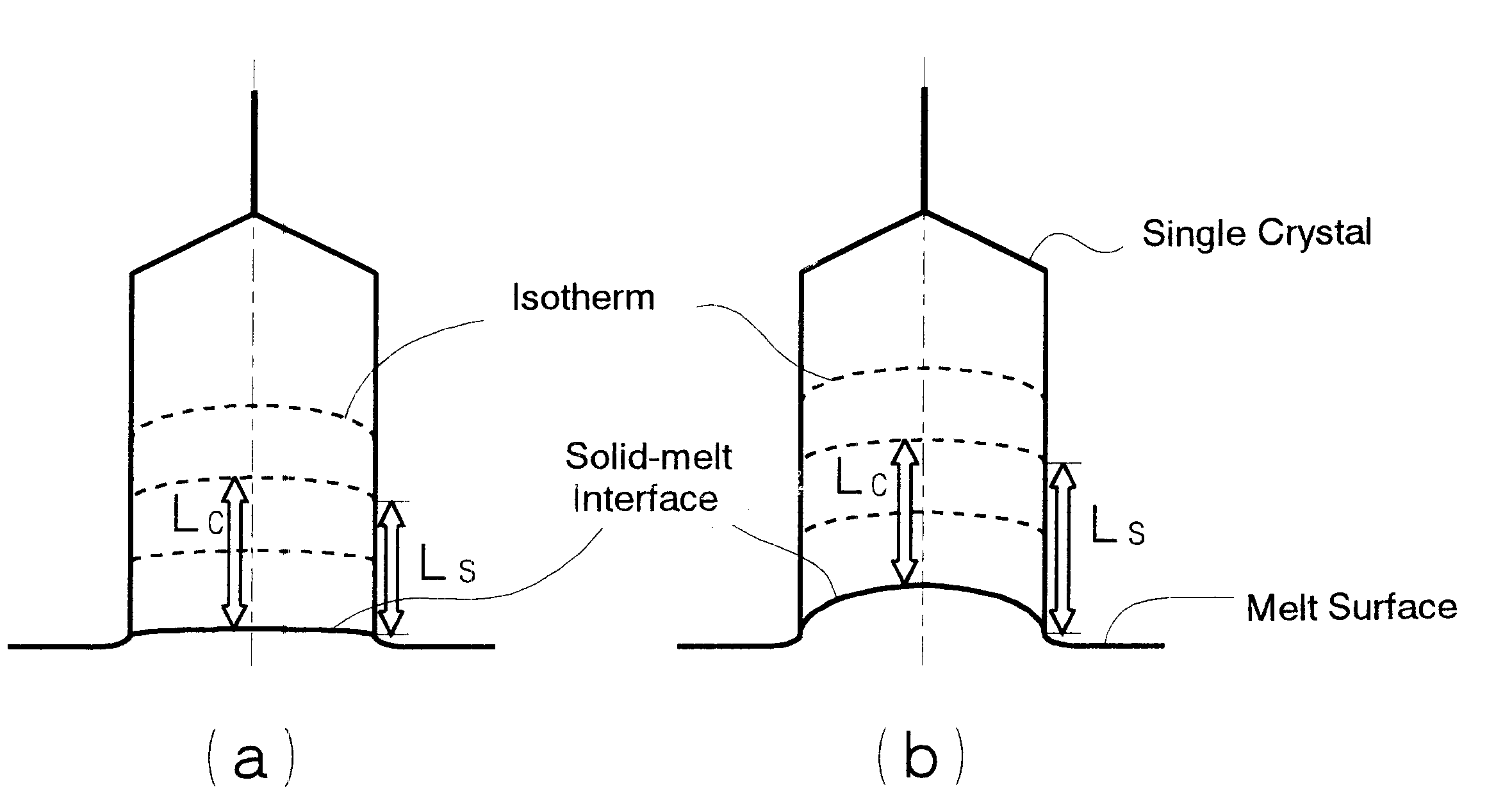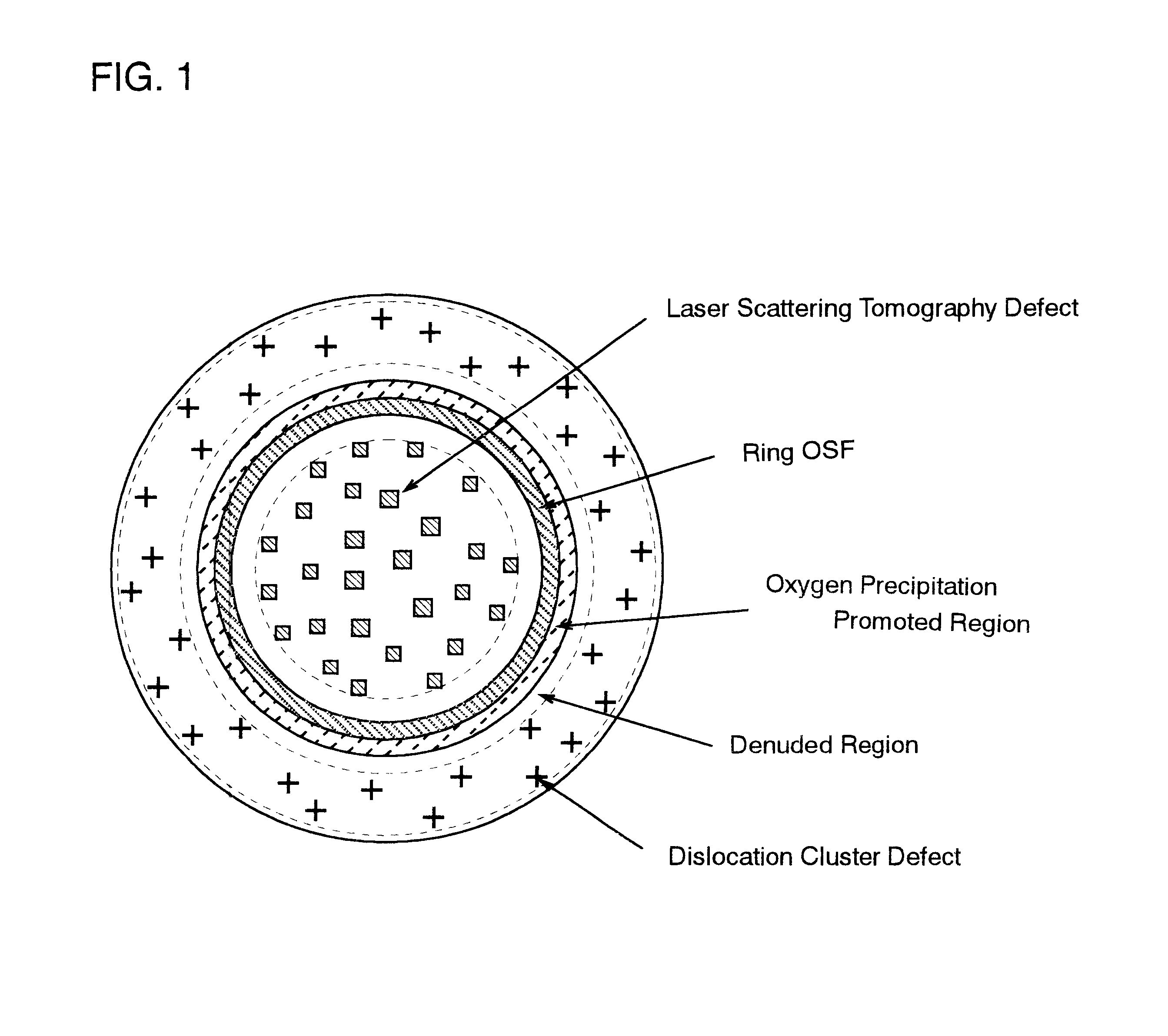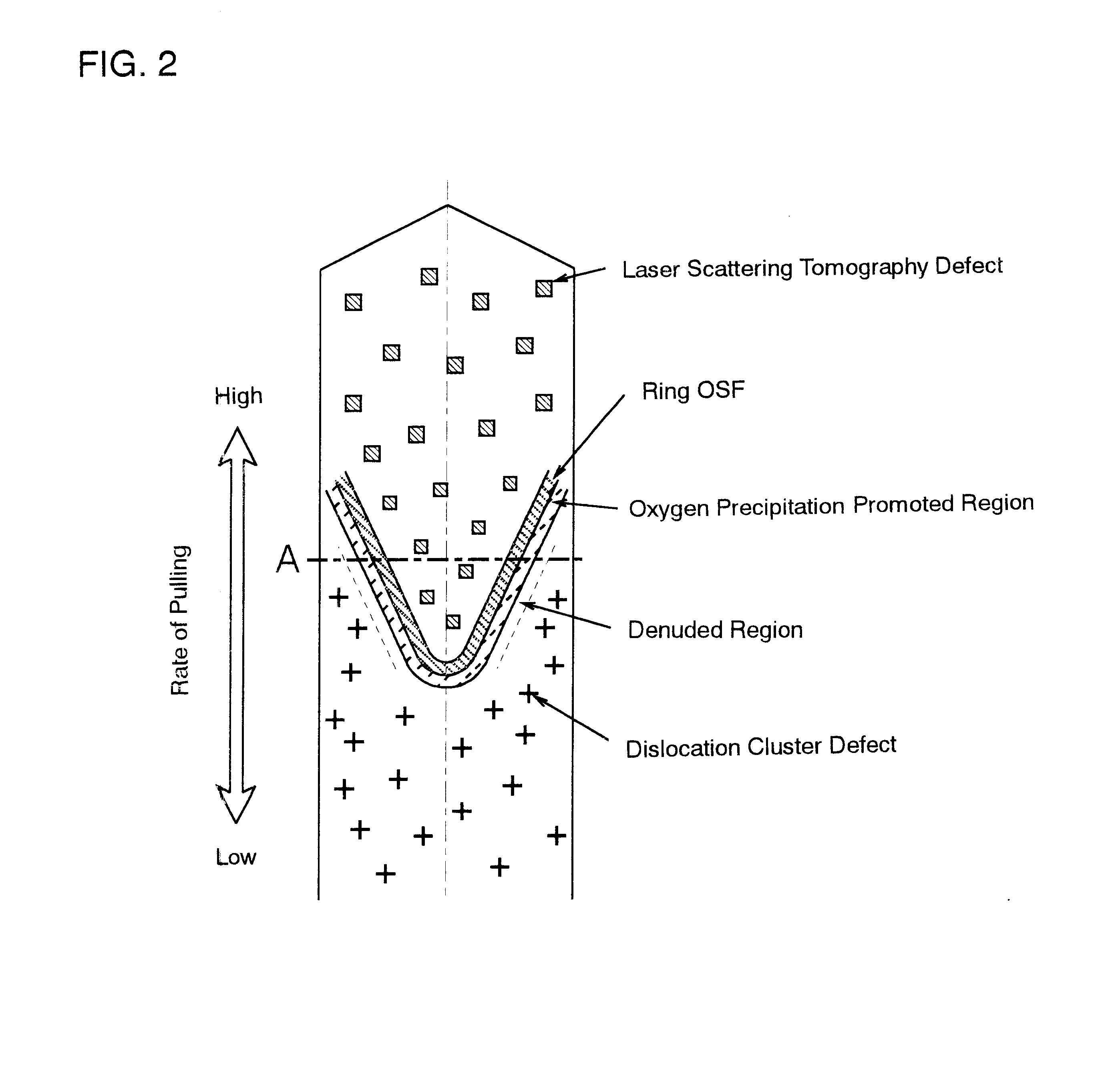Method of producing high-quality silicon single crystals
a single crystal, high-quality technology, applied in the direction of crystal growth process, polycrystalline material growth, under protective fluid, etc., can solve the problems of device characteristics deterioration, device defects, and device underperforman
- Summary
- Abstract
- Description
- Claims
- Application Information
AI Technical Summary
Problems solved by technology
Method used
Image
Examples
examples
Using a single crystal puller allowing application of a horizontal magnetic field or cusped magnetic field, as shown in FIG. 5, 8-inch silicon single crystals were grown. Thus, a crucible la was charged with 120 kg of polycrystalline silicon as the starting material, and the p-type dopant boron was added thereto in an amount to give a crystal electric resistance of about 10 .OMEGA.cm. An argon atmosphere at 1,333 Pa was used as the atmosphere within the apparatus. The heat shield 7 used had a structure such that a cylindrical carbon felt body 7a with an inside diameter of 300 mm and a thickness of 50 mm was covered with a 7 mm-thick high purity graphite layer 7b. The shield was disposed so that the lower end thereof was 90 mm above the surface of the melt 3. An exciting coil 9 was disposed outside the stainless steel chamber 8 and a horizontal magnetic field or cusped magnetic field was applied by exchanging the coil.
The materials charged into the crucible la were heated by means of...
PUM
| Property | Measurement | Unit |
|---|---|---|
| magnetic field | aaaaa | aaaaa |
| magnetic field | aaaaa | aaaaa |
| melting point | aaaaa | aaaaa |
Abstract
Description
Claims
Application Information
 Login to View More
Login to View More - R&D
- Intellectual Property
- Life Sciences
- Materials
- Tech Scout
- Unparalleled Data Quality
- Higher Quality Content
- 60% Fewer Hallucinations
Browse by: Latest US Patents, China's latest patents, Technical Efficacy Thesaurus, Application Domain, Technology Topic, Popular Technical Reports.
© 2025 PatSnap. All rights reserved.Legal|Privacy policy|Modern Slavery Act Transparency Statement|Sitemap|About US| Contact US: help@patsnap.com



